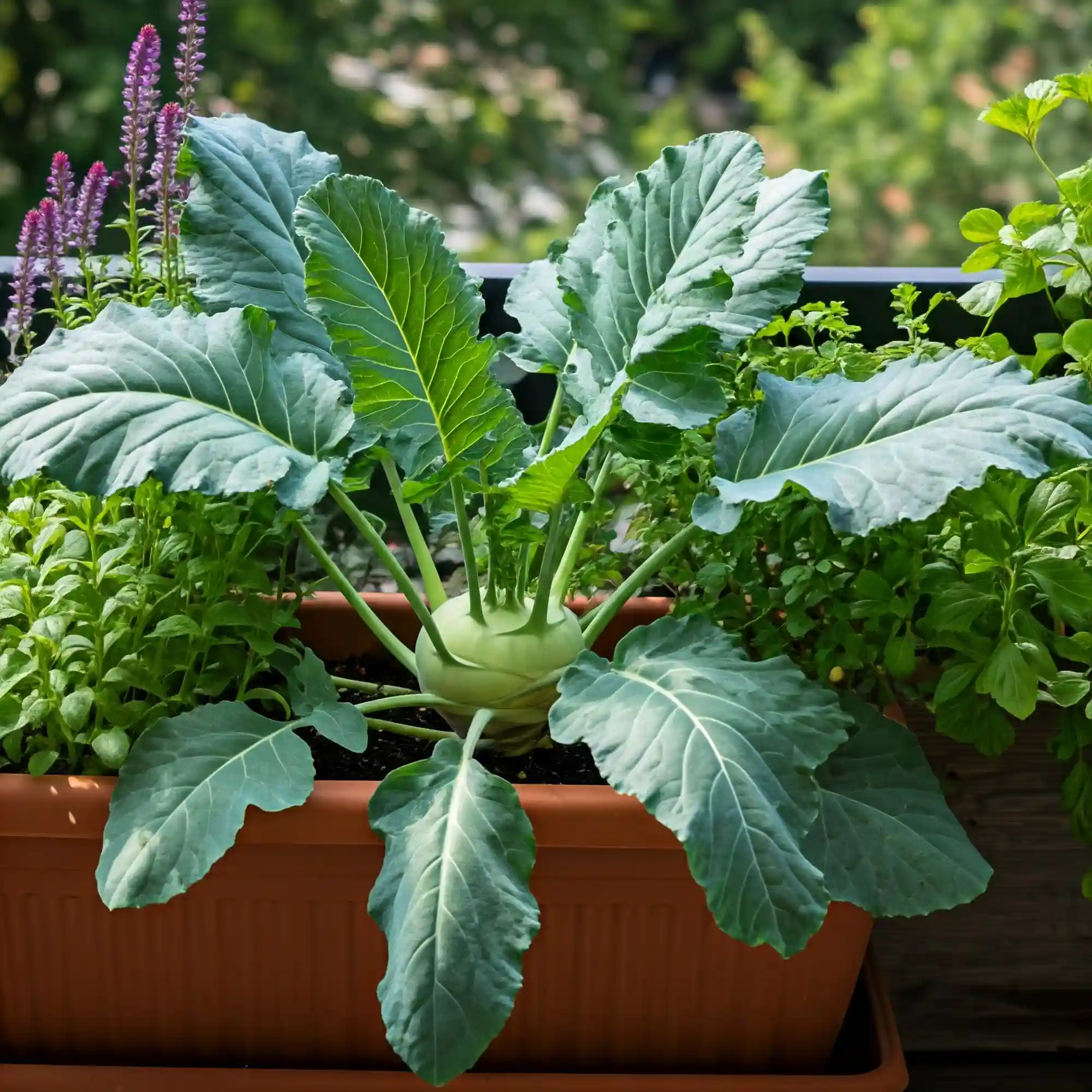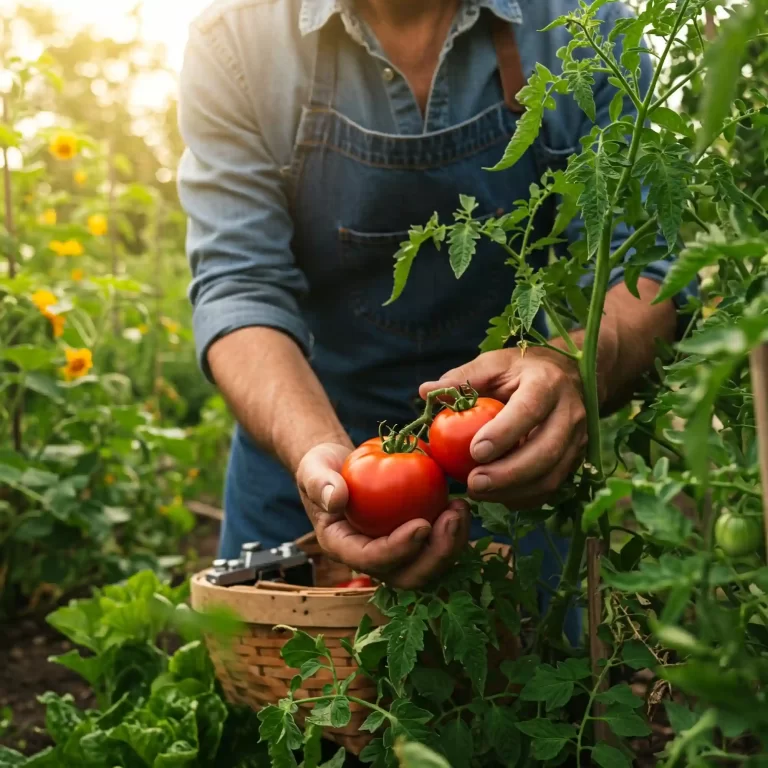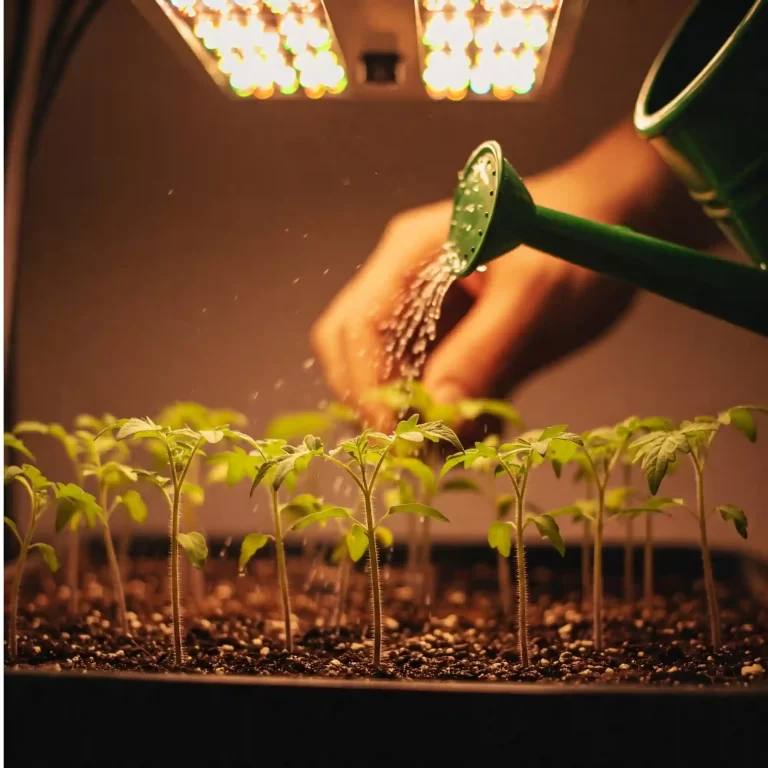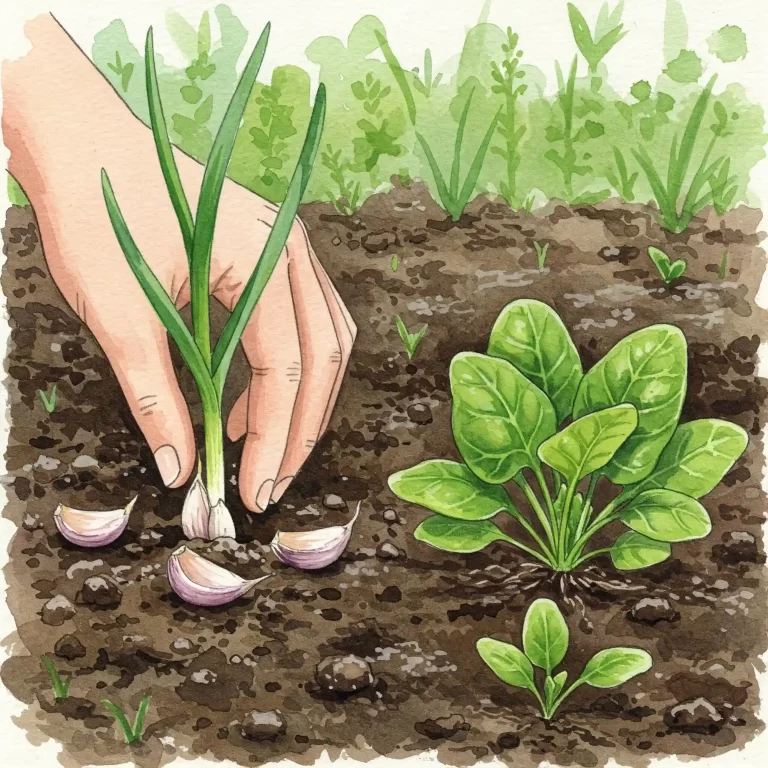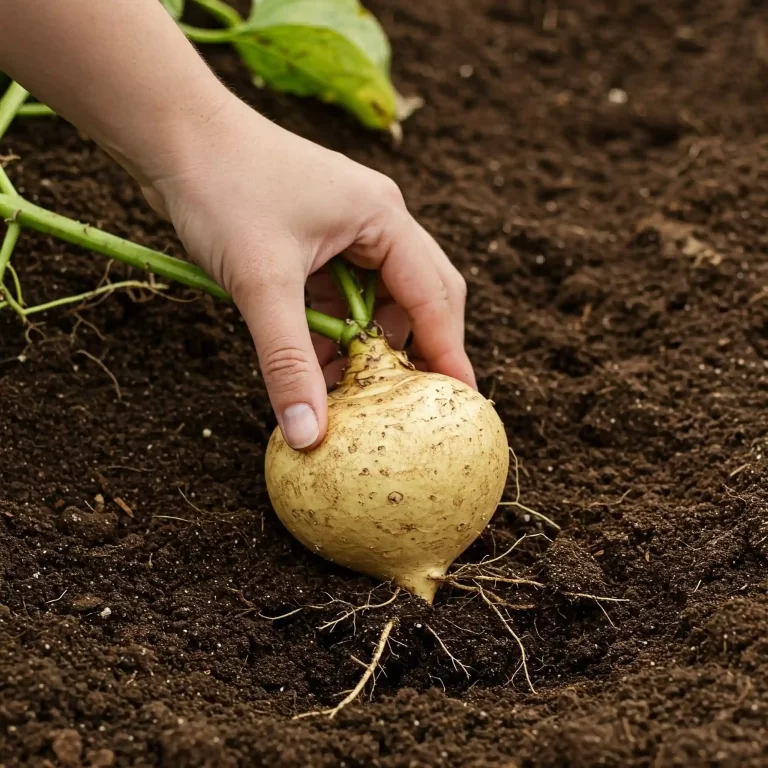Ever bite into a store-bought kohlrabi and find it tough, woody, or just…blah? It’s frustrating, isn’t it? You go to the effort of buying something you want to enjoy, only to be disappointed. I’ve been there. You crave that crisp, slightly sweet, refreshing crunch, but what you get is a letdown. But what if you could grow your own kohlrabi, ensuring peak freshness and flavor every time? You absolutely can! Growing kohlrabi is easier than you might think, and this guide will show you exactly how to do it.
Understanding Kohlrabi (What is Kohlrabi?)
Kohlrabi (Brassica oleracea Gongylodes Group) is a unique and often underappreciated vegetable. As a member of the cabbage family, it’s related to broccoli, cauliflower, and kale. However, unlike its leafy cousins, kohlrabi is grown for its swollen, bulbous stem, which grows just above the ground. I remember the first time I saw kohlrabi; it looked like something from a science fiction movie! But don’t let its unusual appearance fool you. It’s a versatile and delicious vegetable.
The bulb is the primary edible part, offering a crisp, mild flavor often described as a cross between a turnip and a broccoli stem. The leaves are also edible and can be cooked similarly to spinach or kale.
There are several varieties of kohlrabi, primarily distinguished by their color:
- Green kohlrabi: These varieties have pale green bulbs and are the most common type. ‘Early White Vienna’ and ‘Grand Duke’ are popular choices.
- Purple kohlrabi: These varieties have vibrant purple skin, though the flesh inside is still pale green. ‘Purple Vienna’ is a well-known variety.
From my experience, both green and purple varieties taste very similar, although the purple varieties can add a nice splash of color to your garden and your plate.
Nutritionally, kohlrabi is a powerhouse. It’s low in calories and high in fiber, vitamin C, and potassium. It also contains various antioxidants and other beneficial plant compounds.
Here’s a breakdown of the nutritional content of 1 cup (135 grams) of raw kohlrabi:
| Nutrient | Amount | % Daily Value |
| Calories | 27 | |
| Fiber | 5 grams | 20% |
| Vitamin C | 93% | |
| Potassium | 14% |
Kohlrabi offers several health benefits:
- Improved Digestion: The high fiber content promotes healthy digestion and can help prevent constipation.
- Boosted Immune System: The rich vitamin C content strengthens the immune system and protects against infections.
- Heart Health: Potassium helps regulate blood pressure and supports heart health.
- Antioxidant Protection: The presence of antioxidants helps protect cells from damage caused by free radicals.
Now that you know a bit more about what kohlrabi is, let’s dive into how you can grow it yourself.
How to Plant Kohlrabi: Getting Started
You might be wondering, “Where do I even begin with growing kohlrabi?” Well, you have two main options: starting from seed indoors or direct sowing into your garden. Both have their advantages, and I’ll walk you through both methods.
Starting from Seed:
Starting seeds indoors gives you a head start on the growing season, especially if you live in a region with a shorter growing period. I’ve found this method particularly useful for getting an earlier harvest.
- When to start seeds indoors: I recommend starting your kohlrabi seeds indoors about 4-6 weeks before the last expected frost in your area. This timing allows the seedlings to develop a strong root system before being transplanted into the garden.
- Best soil for seed starting: When starting seeds indoors, I always use a fine-textured seed starting mix. This type of mix is specifically formulated to provide good drainage and aeration, which is essential for healthy seedling development. Avoid using garden soil, as it can be too heavy and may contain weed seeds or disease pathogens.
- How to sow kohlrabi seeds: Sow the seeds about ¼ inch deep in small containers or seed trays. I like to use individual cells or small pots to minimize root disturbance when transplanting. Gently press the soil over the seeds and water them thoroughly.
- Maintaining proper moisture and temperature for germination: Kohlrabi seeds germinate best in temperatures between 65-75°F (18-24°C). I use a heat mat to maintain a consistent temperature, especially in cooler environments. Keep the soil consistently moist but not waterlogged. You can use a spray bottle to mist the soil regularly.
Direct Sowing:
Direct sowing is a simpler method where you sow the seeds directly into the garden bed. This method works well if you have a longer growing season and your soil is workable early in the spring.
- When to direct sow: Direct sow kohlrabi seeds after the last frost when the soil temperature has warmed up to at least 40°F (4°C). I usually wait a week or two after the last frost to ensure the soil is warm enough.
- Preparing the garden bed: Before direct sowing, prepare the garden bed by loosening the soil and amending it with compost or other organic matter. This will improve drainage and provide essential nutrients for the kohlrabi plants.
- Spacing kohlrabi seeds: Sow the seeds about ½ inch deep and space them about 2-3 inches apart in rows. Once the seedlings emerge, you’ll need to thin them to about 6-8 inches apart to allow for proper bulb development.
Whether you choose to start your kohlrabi seeds indoors or direct sow them, getting the planting process right is crucial for a successful harvest.
How to Grow Kohlrabi: Ideal Growing Conditions
Just like us, kohlrabi plants have specific preferences when it comes to their living environment. Providing the right growing conditions is essential for healthy growth and a bountiful harvest. From my experience, paying close attention to these factors can make a huge difference in the size and quality of your kohlrabi bulbs.
Sunlight:
Kohlrabi thrives in full sun, meaning it needs at least 6-8 hours of direct sunlight per day. I’ve noticed that plants grown in shadier conditions tend to produce smaller bulbs and are more susceptible to diseases. If you live in a particularly hot climate, providing some light afternoon shade can help prevent the plants from bolting (going to seed prematurely).
Soil:
When it comes to soil, kohlrabi prefers well-drained, fertile soil with a pH between 6.0 and 7.5. This slightly acidic to neutral pH range ensures that the plants can access the nutrients they need. I always amend my garden beds with plenty of compost or well-rotted manure before planting. This not only improves drainage but also provides essential organic matter that helps retain moisture and nutrients.
Watering:
Consistent watering is crucial for kohlrabi, especially during dry periods. These plants need a steady supply of moisture to develop those crisp, juicy bulbs. I aim to water my kohlrabi plants deeply once or twice a week, depending on the weather conditions. You can check the soil moisture by sticking your finger about an inch into the soil. If it feels dry, it’s time to water. Avoid overhead watering, as this can increase the risk of fungal diseases. Instead, water at the base of the plants.
Fertilizing:
Kohlrabi is a relatively heavy feeder, meaning it needs a good supply of nutrients to grow well. I usually fertilize my plants a few weeks after transplanting or thinning, using a balanced fertilizer or a fertilizer specifically formulated for vegetables. You can also side-dress the plants with compost or well-rotted manure throughout the growing season.
Temperature:
Kohlrabi is a cool-season crop, meaning it grows best in cooler temperatures. The ideal temperature range for kohlrabi is between 60-75°F (15-24°C). I find that plants grown in hotter temperatures are more likely to bolt, which means they start producing flowers and seeds instead of developing a bulb. If you live in a warmer climate, you can try planting kohlrabi in the early spring or late summer for a fall harvest.
By providing these ideal growing conditions, you’ll set your kohlrabi plants up for success.
How to Care for Kohlrabi Plants
Once your kohlrabi plants are established, a little ongoing care will ensure they thrive. I’ve learned over the years that consistent attention to a few key details can really boost your harvest.
Thinning Seedlings:
If you started your kohlrabi from seed, whether indoors or directly sown, thinning is a crucial step. When the seedlings have developed a few sets of true leaves (the second set of leaves that appear after the initial seed leaves), it’s time to thin them. This means removing some of the seedlings to provide adequate space for the remaining plants to grow. I know it can feel a little brutal to pull out perfectly good seedlings, but trust me, it’s worth it in the long run.
- How to thin: Carefully remove the weaker seedlings, leaving the strongest ones. I usually pinch them off at the soil line or use small scissors to cut them.
- Spacing: Aim for a final spacing of about 6-8 inches between plants. This gives the kohlrabi bulbs enough room to develop properly.
Weeding:
Keeping the area around your kohlrabi plants free of weeds is important for several reasons. Weeds compete with your kohlrabi for water, nutrients, and sunlight. They can also harbor pests and diseases. I like to weed regularly, either by hand or with a hoe.
- Mulching: Applying a layer of mulch around your kohlrabi plants can help suppress weeds and retain soil moisture. I use organic mulches like straw, shredded leaves, or wood chips.
Pest and Disease Control:
Like all plants, kohlrabi can be susceptible to certain pests and diseases. Here are some common problems to watch out for:
- Common Pests: Aphids, cabbage worms (caterpillars of the cabbage white butterfly), and flea beetles are common kohlrabi pests. I often check my plants regularly for signs of these pests.
- Organic Pest Control Methods: If you find pests on your kohlrabi plants, there are several organic methods you can use to control them. Handpicking pests, using insecticidal soap, or applying neem oil are effective options.
- Common Diseases: Clubroot is a common disease that affects kohlrabi and other members of the cabbage family. It causes the roots to become swollen and distorted, which can stunt the plant’s growth. Crop rotation and maintaining a proper soil pH can help prevent clubroot.
Preventing Bolting:
Bolting, or premature flowering, is a common problem with kohlrabi, especially in hot weather. When a kohlrabi plant bolts, it focuses its energy on producing flowers and seeds instead of developing a bulb. This makes the bulb tough and inedible.
- What causes bolting? Hot weather, inconsistent watering, and stress can all contribute to bolting.
- How to prevent it: Choose bolt-resistant varieties, plant at the right time of year (early spring or late summer), provide consistent watering, and protect plants from extreme heat.
By following these care tips, you’ll be well on your way to growing healthy and productive kohlrabi plants.
How to Harvest Kohlrabi
After all your hard work, it’s time for the most rewarding part: harvesting your kohlrabi! Knowing exactly when and how to harvest will ensure you enjoy the best flavor and texture. From my experience, timing is everything with kohlrabi.
When to Harvest Kohlrabi
The ideal time to harvest kohlrabi is when the bulbs are about 2-3 inches in diameter. At this size, they are tender and have the best flavor. If you let them grow much larger, they can become tough and woody. I usually start checking the size of my kohlrabi bulbs about 6-8 weeks after planting.
How to Harvest Kohlrabi
Harvesting kohlrabi is simple:
- Use a sharp knife or garden shears to cut the bulb just above the soil surface.
- Remove the leaves from the bulb. You can save the leaves and cook them like spinach or kale.
Storing Kohlrabi After Harvest
Kohlrabi can be stored in the refrigerator for several weeks. I usually wrap the bulbs in a plastic bag or store them in a container with a lid. The leaves can also be stored in the refrigerator, but they will keep best if you store them separately from the bulbs.
Tips for Harvesting and Storing Kohlrabi:
- Harvest kohlrabi in the morning when the plants are cool and crisp.
- Avoid harvesting kohlrabi during hot, dry weather, as this can cause the bulbs to be tough.
- If you’re not going to use the kohlrabi right away, you can store it in a cool, dark place for a few days.
- For longer storage, you can freeze kohlrabi. To do this, blanch the bulbs in boiling water for a few minutes, then cool them in ice water. Drain the kohlrabi and then freeze it in freezer bags or containers.
Now that you know how to harvest and store kohlrabi, you can enjoy this delicious vegetable throughout the growing season and beyond.
Growing Kohlrabi in Containers
If you have limited garden space or prefer container gardening, you’ll be happy to know that kohlrabi can thrive in pots. I’ve successfully grown kohlrabi in containers on my balcony, and it’s a great way to enjoy fresh kohlrabi even if you don’t have a traditional garden.
Choosing the Right Container
When growing kohlrabi in containers, selecting the right pot is essential. Here are a few things to consider:
- Size: Choose a container that is at least 12 inches in diameter and 12 inches deep. This will provide enough space for the kohlrabi bulb to develop properly.
- Material: You can use various materials for your containers, such as plastic, terracotta, or ceramic. I prefer terracotta pots because they are porous and allow for good drainage.
- Drainage: Make sure the container has drainage holes at the bottom to prevent waterlogging.
Best Soil Mix for Container Growing
When growing kohlrabi in containers, I recommend using a high-quality potting mix. Avoid using garden soil, as it can be too heavy and may not drain well in containers. You can also amend the potting mix with compost or other organic matter to improve its fertility.
Watering and Fertilizing Kohlrabi in Containers
Kohlrabi grown in containers will need more frequent watering than those grown in the ground, as the soil in containers tends to dry out more quickly. I usually water my container-grown kohlrabi every day or every other day, depending on the weather conditions.
You’ll also need to fertilize your container-grown kohlrabi regularly. I recommend using a balanced liquid fertilizer diluted to half strength. You can fertilize every 2-3 weeks throughout the growing season.
Tips for Growing Kohlrabi in Containers:
- Place your kohlrabi container in a location that receives at least 6-8 hours of sunlight per day.
- Monitor the soil moisture regularly and water as needed.
- Fertilize your kohlrabi plants regularly to provide them with the nutrients they need.
- Protect your container-grown kohlrabi from extreme heat or cold.
Growing kohlrabi in containers is a great way to enjoy this delicious vegetable even if you have limited space. With a little care and attention, you can harvest fresh, crisp kohlrabi bulbs from your container garden.
Frequently Asked Questions (FAQs)
I’ve compiled a list of frequently asked questions about growing kohlrabi to provide you with quick and easy answers. These are questions I often get from fellow gardeners, and I hope they’re helpful for you as well.
- How long does it take to grow kohlrabi from seed?
Kohlrabi typically takes about 6-8 weeks to mature from seed to harvest. Starting seeds indoors can give you a head start and allow for an earlier harvest. - What is the best way to grow kohlrabi organically?
To grow kohlrabi organically, focus on building healthy soil with compost and other organic matter. Use organic fertilizers and pest control methods, such as handpicking pests or using neem oil. - How to grow kohlrabi vegetable in containers on a patio?
Choose a container that is at least 12 inches in diameter and depth. Use a high-quality potting mix and water regularly. Place the container in a sunny location and fertilize every 2-3 weeks. - How to grow kohlrabi vegetable in zone [specific zone]?
The best time to plant kohlrabi depends on your specific growing zone. In general, plant in early spring or late summer for a fall harvest. Consult your local extension office for specific planting dates for your area. - How to grow kohlrabi vegetable and prevent it from bolting?
Choose bolt-resistant varieties, plant at the right time of year, provide consistent watering, and protect plants from extreme heat. - What are the common pests that affect kohlrabi vegetable and how to control them?
Aphids, cabbage worms, and flea beetles are common kohlrabi pests. Use organic pest control methods, such as handpicking pests, using insecticidal soap, or applying neem oil. - How to grow kohlrabi vegetable for a successful fall harvest?
Plant kohlrabi in late summer for a fall harvest. Choose early maturing varieties and provide adequate water and fertilizer. - How to grow large and healthy kohlrabi vegetable bulbs in my garden?
Provide full sun, well-drained soil, consistent watering, and regular fertilization. Thin seedlings to provide adequate spacing and protect plants from pests and diseases. - How to grow kohlrabi vegetable alongside companion plants for better yield?
Companion plants for kohlrabi include onions, garlic, and herbs like rosemary and thyme. These plants can help deter pests and improve growth. - How to grow kohlrabi vegetable in raised beds with limited space?
Kohlrabi can be grown successfully in raised beds. Choose a raised bed that is at least 12 inches deep and provide adequate spacing between plants. - How to grow kohlrabi vegetable without using chemical fertilizers or pesticides?
Focus on building healthy soil with compost and other organic matter. Use organic fertilizers and pest control methods. - Step-by-step guide on how to grow kohlrabi vegetable for beginners.
- Start seeds indoors or direct sow after the last frost.
- Provide full sun and well-drained soil.
- Water regularly and fertilize as needed.
- Protect plants from pests and diseases.
- Harvest when bulbs are 2-3 inches in diameter.
I hope these FAQs have answered any remaining questions you have about growing kohlrabi. If you have any other questions, feel free to ask!
Conclusion: Enjoying Your Homegrown Kohlrabi
Growing kohlrabi can be a truly rewarding experience. From the initial planting of the tiny seeds to the final harvest of crisp, juicy bulbs, each step brings you closer to enjoying the unique flavor and texture of this versatile vegetable. By following the tips and advice I’ve shared in this guide, you’ll be well on your way to a successful kohlrabi harvest.
I remember my first attempt at growing kohlrabi. I made a few mistakes along the way, but I learned from them, and each year my kohlrabi crop gets better and better. I encourage you to embrace the learning process and enjoy the journey of growing your own food.
Whether you have a large garden or just a few containers on your balcony, kohlrabi is a great addition to any growing space. Its unique appearance and delicious flavor make it a fun and interesting vegetable to grow.
So, get out there and start growing your own kohlrabi! With a little care and attention, you’ll be enjoying fresh, homegrown kohlrabi in no time. And who knows, you might even discover a new favorite vegetable!
